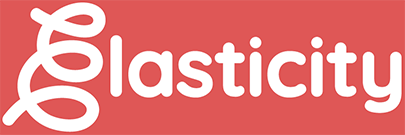Public sector digital marketing: 5 Proven Strategies 2025
Public sector digital marketing is changing how government agencies connect with their audiences. This approach leverages digital tools to effectively engage with citizens, offering a cost-effective solution amid budget constraints. Here’s what you need to know:
- Digital marketing is more efficient and affordable compared to traditional methods.
- Real-time data and insights help in making informed marketing decisions.
- The pandemic has accelerated the shift towards online platforms.
- Social media enables two-way communication, building trust and transparency.
In today’s dynamic landscape, public sector organizations recognize the pivotal role of digital strategies in enhancing citizen engagement and fostering transparency. As this sector steers digital change, there’s ample room for innovation and improvement. We’ll dig into strategies, challenges, and key channels that shape this transformative journey.
I’m Jen Stamulis, with over a decade of experience in marketing strategy and communications. My background includes leading initiatives for government and public sector services, which aligns with the essence of public sector digital marketing. Transitioning smoothly into the detailed strategies, let’s explore how these digital shifts are redefining connections within the public sector.

The Importance of Public Sector Digital Marketing
Public sector digital marketing is not just a trend; it’s a necessity. As government agencies and public organizations strive to connect with citizens, digital marketing offers a transparent and efficient solution.
Transparency
Transparency is a cornerstone of public trust. Citizens expect clear and open communication from their government. Digital marketing channels, like social media and official websites, provide real-time updates and foster a two-way dialogue. This openness builds trust and allows citizens to engage directly with government initiatives.
“By communicating transparently and delivering reliable results, government agencies can create the conditions for more informed and empowered residents.”
Budget Constraints
Budget constraints are a common challenge for public sector agencies. Traditional marketing methods, like print and TV ads, are costly and often out of reach. Digital marketing, however, is cost-effective and scalable. Agencies can reach a wider audience without breaking the bank. By leveraging social media, email, and content marketing, public organizations can maximize their impact with limited resources.
- Cost-effective: Digital channels are cheaper than traditional media.
- Scalable: Campaigns can be adjusted based on budget and reach.
Competition for Attention
In a world saturated with information, capturing the public’s attention is more challenging than ever. Government agencies are not just competing with each other but with every other source of information. Digital marketing allows public sector organizations to tailor their messages and target specific audiences. This focused approach ensures that important messages reach the right people at the right time.
- Targeted messaging: Reach specific demographics with precision.
- Engaging content: Use interactive and engaging formats to capture interest.
In summary, public sector digital marketing is crucial for building transparency, managing budget constraints, and standing out in a crowded information landscape. We’ll explore how to develop comprehensive digital strategies that align with these goals.
Developing a Comprehensive Digital Marketing Strategy
Creating a comprehensive digital marketing strategy is essential for public sector organizations aiming to engage effectively with their audience. This requires a clear understanding of who your audience is and what you want to achieve.
Consider Your Audience
Understanding your audience is the first step in crafting a successful strategy. Public sector organizations often have a diverse range of stakeholders, including citizens, businesses, and other government entities. Each group has different needs and interests.
To address these varying needs, create buyer personas. These are detailed profiles that represent different segments of your audience. They help you understand what your audience cares about and how best to reach them. For example, a local government might have personas for young professionals, seniors, and local businesses.
By knowing your audience, you can tailor your messages to resonate with them, increasing the effectiveness of your campaigns.
Lay Out Your Objectives
After understanding your audience, it’s crucial to define your objectives. What do you hope to achieve with your digital marketing efforts? Setting clear and achievable goals is vital.
Use the S.M.A.R.T. goals framework to ensure your objectives are Specific, Measurable, Achievable, Relevant, and Time-bound. For instance, a government agency might aim to increase website traffic by 20% in the next three months by targeting local residents.
Align these goals with your overarching business objectives. This alignment ensures that your digital marketing efforts support your organization’s mission and priorities. For example, if a public health department’s mission is to improve community health, a relevant objective might be to increase engagement with health-related content on social media platforms.
By defining clear objectives, you can measure the success of your campaigns and make informed decisions about where to allocate resources.
In the next section, we’ll dig into the key digital marketing channels that public sector organizations can leverage to reach their audiences effectively.
Key Digital Marketing Channels for the Public Sector
Public sector organizations have a wealth of channels to connect with their audiences. Leveraging these channels effectively can improve engagement, improve transparency, and achieve organizational goals.
Email Marketing
Email marketing is a powerful tool for public sector organizations. It allows for direct communication with stakeholders, providing updates and announcements quickly and efficiently.
Imagine a city council sending out a monthly newsletter to residents. This newsletter can include important updates about local projects, upcoming community events, and policy changes. By segmenting their email list, the council can tailor content to different audience groups, ensuring relevance and increasing the likelihood of engagement.
One of the key advantages of email marketing is its cost-effectiveness. With tight budgets, public sector organizations can reach a large audience at a minimal cost. Plus, tracking metrics such as open rates and click-through rates helps measure success and refine strategies.
Social Media Marketing
Social media platforms are indispensable for public sector engagement. They offer a space to interact with citizens, share information, and build trust.
Consider the role of social media during emergencies. Quick updates on platforms like Twitter and Facebook can inform the public about safety measures and provide real-time information. This was evident during the COVID-19 pandemic, where social media served as a critical channel for health departments to disseminate guidelines and updates.
Each platform has its strengths. For instance, Twitter is excellent for real-time updates, while Instagram can be used for more visual storytelling. By understanding the unique features of each platform, public sector organizations can craft content that resonates with their audience and encourages interaction.
Search Engine Optimization (SEO)
Search Engine Optimization (SEO) is essential for increasing the visibility of public sector websites. When citizens search for information online, they expect to find it quickly. Optimizing for search engines ensures that your content appears prominently in search results.
Keywords play a crucial role in SEO. By identifying and incorporating relevant keywords into website content, public sector organizations can improve their search rankings. For example, a transportation department might focus on keywords like “local bus schedule” or “road construction updates” to help citizens find the information they need.
SEO is not just about keywords; it’s also about providing a seamless user experience. This includes fast-loading pages, mobile-friendly designs, and easy navigation. By prioritizing SEO, public sector organizations can ensure their websites serve as effective information hubs for citizens.
In addition to these channels, Pay-Per-Click (PPC) advertising and content marketing are valuable strategies for reaching target audiences. PPC allows for targeted advertising based on specific demographics or interests, while content marketing focuses on creating valuable content that educates and informs.
By integrating these channels into a cohesive strategy, public sector organizations can improve their digital presence and connect with their communities more effectively.
Next, we’ll explore the challenges faced in public sector digital marketing and solutions to overcome them.
Challenges and Solutions in Public Sector Digital Marketing
Navigating the digital landscape in the public sector comes with its own set of challenges. These include budget limitations, technology gaps, and security concerns. However, with strategic planning, these problems can be overcome effectively.
Budget Limitations
Public sector organizations often operate under tight budget constraints. Unlike private companies, their primary goal isn’t profit but public service, which means they have to be more resourceful with their spending.
Cost-effective strategies are crucial. For example, leveraging free or low-cost social media platforms can maximize outreach without breaking the bank. Public sector organizations can also use email marketing for direct communication, as it’s both affordable and effective.
Tracking the Return on Investment (ROI) is essential to justify expenditures. By measuring engagement metrics—like open rates in emails or interaction rates on social media—organizations can demonstrate the effectiveness of their campaigns and make informed decisions about where to allocate resources.
Technology Gap
The technology gap is another significant hurdle. Public sector organizations often lag behind the private sector in adopting the latest digital tools and technologies. This can limit their ability to engage effectively with citizens.
To bridge this gap, it’s important to stay updated on the latest trends. For instance, adopting AI-driven tools can improve citizen engagement by providing personalized experiences and automating routine tasks. This not only improves efficiency but also frees up resources for more strategic initiatives.
Comparing with the private sector can offer valuable insights. Many private companies are at the forefront of digital innovation, and public sector organizations can learn from their successes and mistakes. Collaborations or partnerships with tech companies can also provide access to cutting-edge technologies without the need for hefty investments.
Security Concerns
Security is a paramount concern, especially when dealing with sensitive citizen data. Public sector organizations must ensure that their digital platforms are secure to maintain public trust.
Implementing robust cybersecurity measures is non-negotiable. This includes using encryption, regularly updating software, and conducting security audits. Training staff on best security practices is equally important to prevent breaches from human error.
By addressing these challenges head-on with strategic solutions, public sector organizations can successfully steer the digital landscape and improve their service delivery.
Next, we’ll dig into some frequently asked questions about public sector digital marketing to further explain the topic.
Frequently Asked Questions about Public Sector Digital Marketing
What is the public sector in marketing?
The public sector in marketing refers to government organizations and agencies that provide services to the public. Unlike private companies that focus on profit, these organizations aim to serve citizens and improve community welfare. Marketing in this context is about communicating effectively with the public to promote transparency, build trust, and ensure that citizens are informed about available services and initiatives.
Is public relations part of digital marketing?
Yes, public relations (PR) is an integral part of digital marketing. In the public sector, PR focuses on maintaining a positive image and fostering trust between government entities and the public. Digital marketing allows for cross-channel integration, where PR efforts can be supported through social media, email campaigns, and online content. This integration ensures consistent messaging and broadens the reach of communication efforts, enhancing the public’s understanding and engagement with government services.
What is PPC marketing in digital marketing?
Pay-per-click (PPC) marketing is a form of online advertising where advertisers pay a fee each time their ad is clicked. It’s a way to buy visits to your site, rather than attempting to “earn” those visits organically. In the public sector, PPC can be used to promote important public service announcements, events, or new initiatives. By targeting specific keywords and demographics, government organizations can reach the right audience efficiently, ensuring that their messages are seen by those who need them most.

In the next section, we’ll explore how these digital marketing strategies can be applied effectively within the public sector, focusing on real-world applications and success stories.
Conclusion
As we steer through the era of digital change, it’s clear that the public sector stands to gain significantly from embracing digital marketing strategies. Government organizations are no longer just service providers; they are becoming active participants in the digital landscape, aiming to build trust and transparency with their citizens.
Elasticity plays a crucial role in this change. Our expertise in digital marketing equips public sector entities with the tools they need to connect with their audiences effectively. From crafting compelling messages to optimizing search engine visibility, we help agencies make their mark in the digital world. For more information on how we can assist with your SEO needs, explore our Search Marketing services.
The benefits of digital marketing in the public sector are substantial. It allows for real-time communication, cost-effective outreach, and the ability to measure impact through data analytics. These advantages not only improve service delivery but also foster a more informed and engaged citizenry.
In conclusion, the shift to digital marketing is not just a trend; it’s a necessity for the public sector. By leveraging innovative strategies and tools, government organizations can meet the evolving expectations of their citizens, ensuring that they remain relevant and effective in today’s digital age.



